Exploring How ‘Multiplicity Maketh The Man’ in This Season’s Collections
By Angela Baidoo
Kicking off the fashion show season every January, Men’s fashion week (lead by Milan and Paris, with London going co-ed and New York down to a single day) has finally carved out a unique space for itself. Showcasing all the ways in which it is expanding to meet the evolving definition of what masculinity, and being a man, means today. Especially when expressed through the medium of fashion.
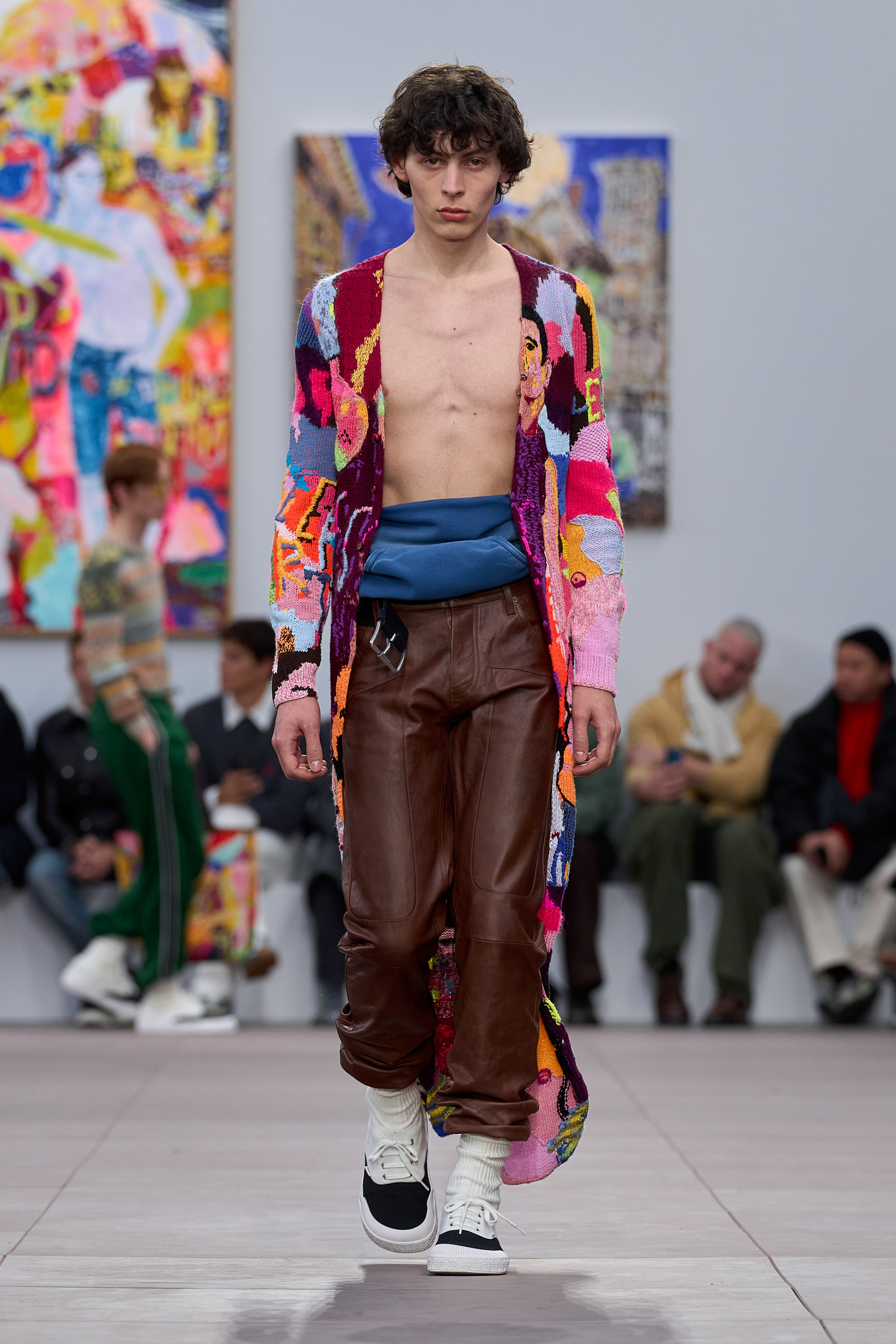
Setting the pace for the seasons to follow, this January Milan and Paris came together to reflect a more tentative luxury fashion industry for fall 2024. One which is more risk-averse and leaning heavily into the known (i.e. the classics) in order to protect the bottom line.
But, in a world that is being rocked daily by ongoing conflict, climate crises, and global financial uncertainty, the question has to be asked, is it not in times of adversity when artists should be inspired to produce their best work?
As the ‘Bright Young Things’ of Britain once did in the 1990s when shows would take place in car parks and would be cobbled together with everything they could beg, borrow, or steal to produce collections which are still some of the most-talked about and referenced today. Yet, in this season opener, it would seem that ‘Business As Usual ‘– both literally and figuratively – was the siren call which ruled the runways. Initially appealing, and even intriguing (seeing how many ways a suit could be paraded down a runway in 40 different guises) at first after a lull in the platforming of true formalwear following the pandemic. Like said siren song, could the turn back towards the status quo also be a dialling back of the radical ideas and boundary pushing which came through over the last five years?
In taking the season at face value and looking at it through the lens of the current global and political climate, it was no surprise to witness designers looking inward (when everything outside of their world is in chaos), and leaning into house codes, reviving the craftsmanship of their foundations, and equipping men to face a changing world in something which feels familiar, i.e. a uniform. Whether that be a tailored suit, utility workwear, or the cosy layers of their grandparents generation to provide comfort.


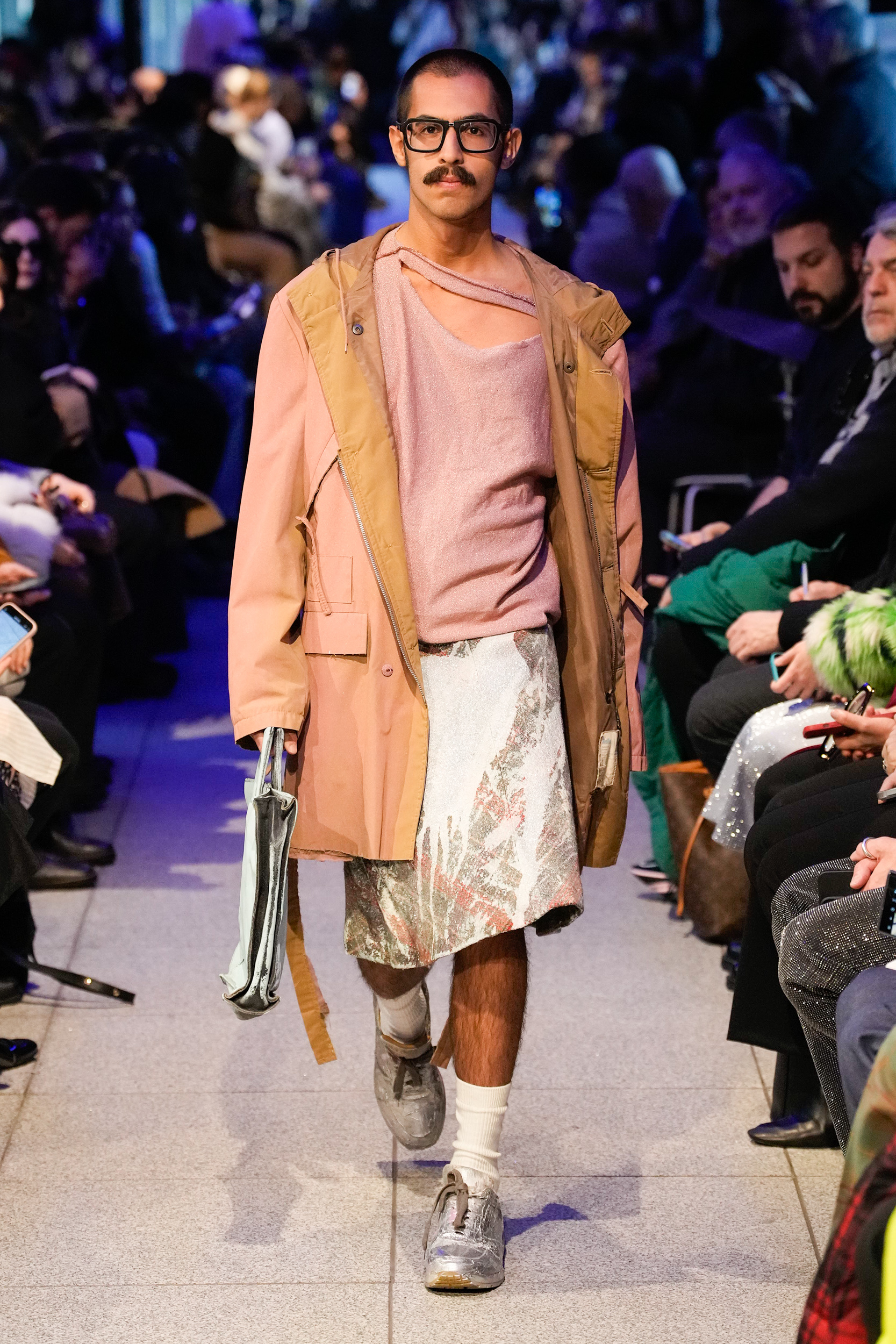
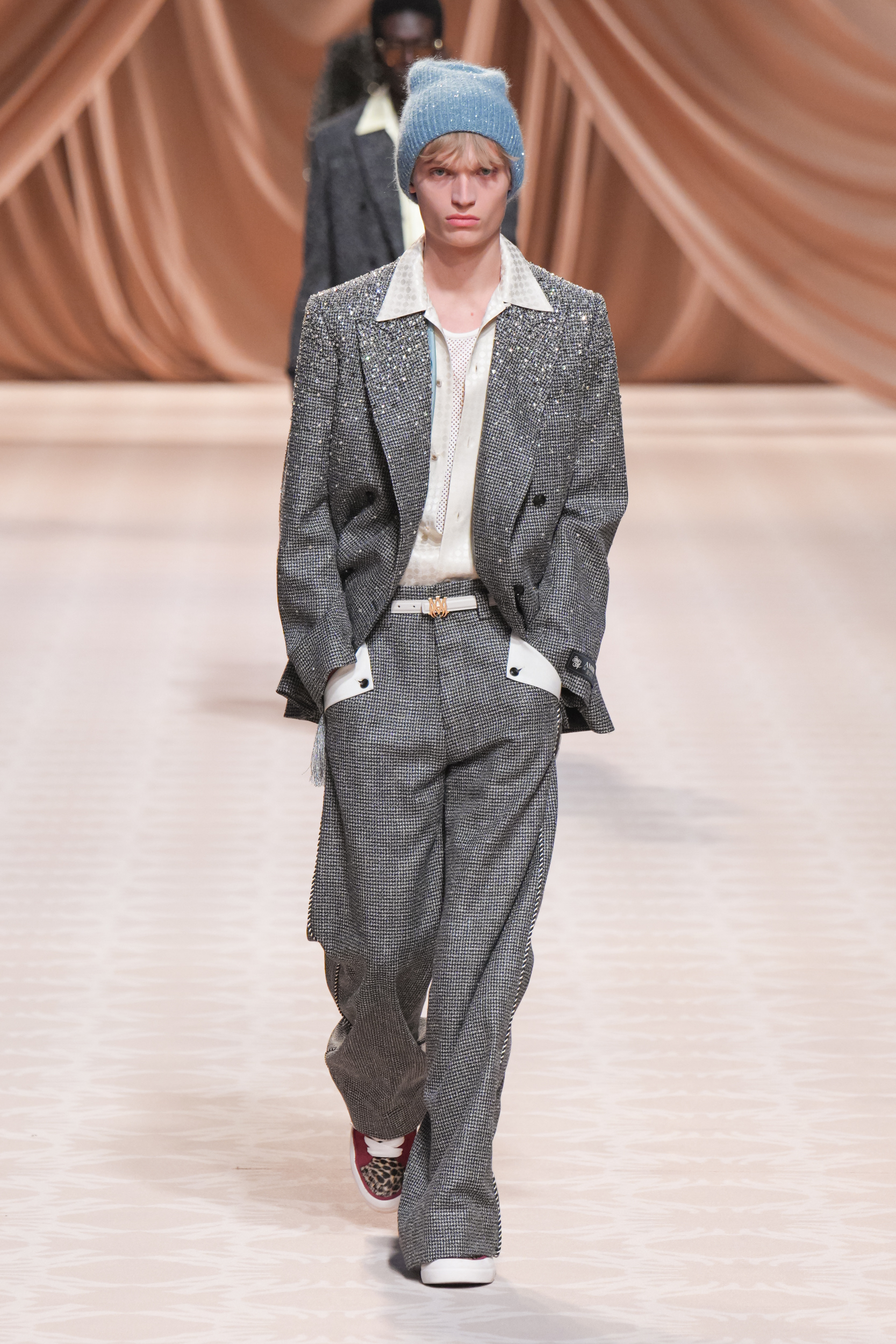
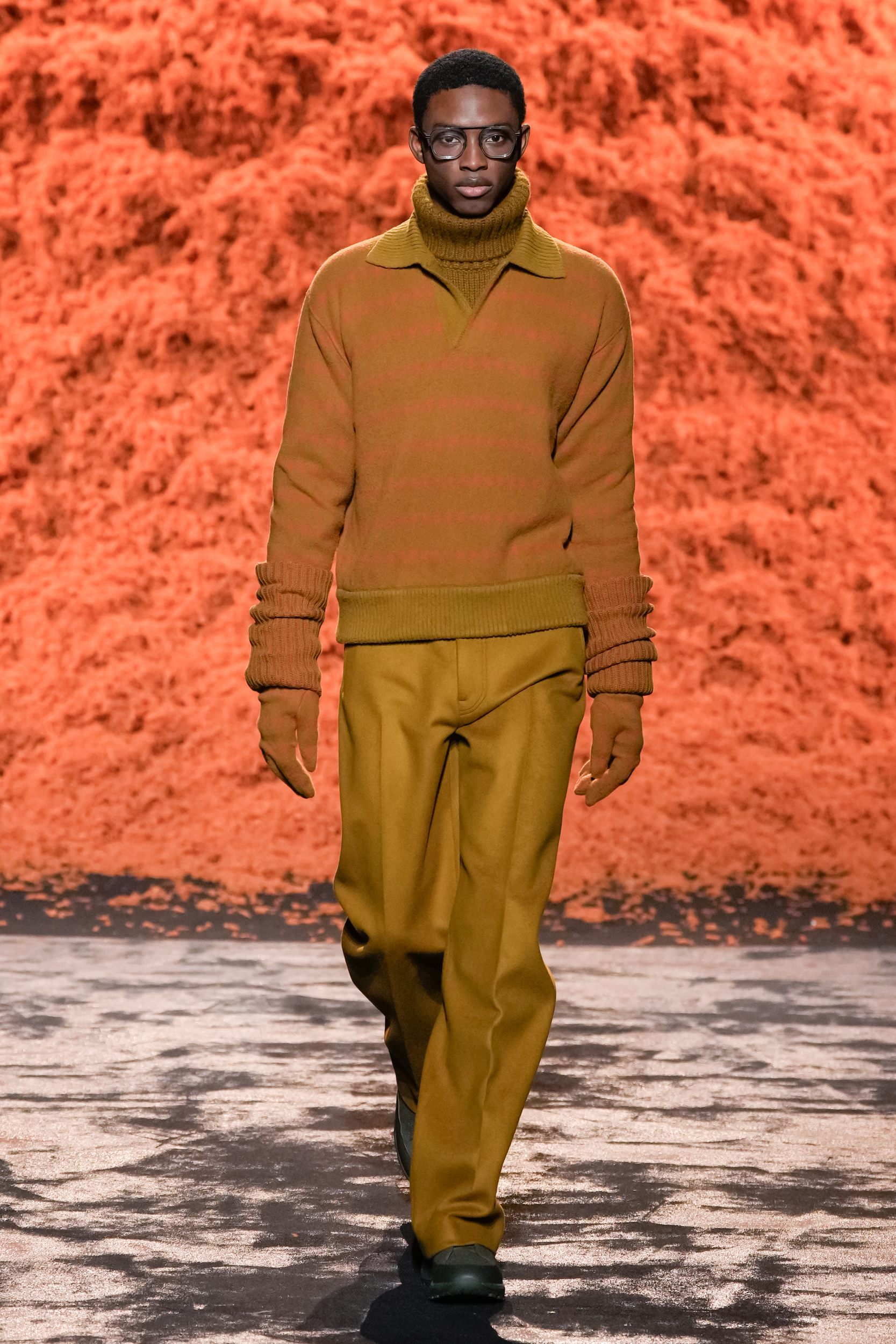
It was left to a few outliers to continue pushing for new narratives within the menswear space and offer a fresh perspective on masculinity unbound by gendered tropes.
In taking a look back at the fall 2024 season, The Impression analyses the key themes that saw a shift in the menswear market and how they are set to influence the wider luxury fashion market.
Key Takeaways
- Evolution of Masculinity in Fashion: Men’s fashion week has firmly established its own identity, reflecting the evolving landscape of ‘New Masculinity’. Demonstrating how the industry is navigating the fine balance between embracing new definitions of what it means to be a man today and reverting to classic styles which align with the need for familiarity amidst global uncertainties.
- Return to Classic Tailoring and Comfort: Designers are increasingly gravitating towards the safety and familiarity of classic tailoring and styles which offer comfort. The former focussing on celebrating ideas around heritage and craft, with the latter playing into the emerging trend dubbed #Grandpacore, which is gaining traction online for its blending of cross-generational styles with a modern twist.
- Innovation within Traditional Boundaries: While the shift towards the ‘known’ was prevalent, there were designers who continued to infuse creativity into their collections, while still operating within traditional frameworks. Unexpected materials, unconventional cuts, directional styling and a layering of textures were employed to drive newness across the menswear market.
- Outdoor and Workwear Influences: The uniformity of workwear, from the corporate to outdoor worlds, continues to influence luxury fashion for its practicality and durability. Designers chose to blend utility details, rugged high-performance fabrics, and slimmer silhouettes to update preppy, the American West, and maritime themes with new high-fashion interpretations.
- The Return of the Dandy Aesthetic: With the growing emphasis on gender fluidity in menswear, the resurgence of the Dandy aesthetic was an inevitability. And this season designers incorporated softer elements such as volume sleeves, sequins, satin, and maximal embellishment, right down to footwear silhouettes. As the ballet flat is set to become the new gender fluid signifier, led by boundary-breaking male celebrities who are exploring and embracing a more experimental personal style.
- Impact of Social Media and Cultural Trends: Social media platforms and visual search engines such as TikTok and Pinterest are continuing to drive the adoption of emerging fashion trends. As the timeline between the rise – then translation – of popular online trends filtering into the mainstream fashion industry gets ever-shorter, we are seeing another strong indicator of the growing power of digital platforms in shaping fashion trends.
Re-embracing Early Man

The failsafe sobriety of uniformity became a beacon for fall, because (it could argued) it was the only logical response to a world in flux, where the reassurance of a simple silhouette was the only thing that could be trusted.
Add to this the struggle for some brands who attempted to walk the fine line between embracing fluidity and upending gender norms, and the turn towards classics categories, like tailoring, was always going to be an inevitability.
Many designers chose to return back to the safety of wearability, but this did not necessarily equate to a loss of momentum for the season, as there still had to be a modicum of creativity applied to the humble tailored suit or the perpetually referenced preppy aesthetic.






It started with Prada who sent their models back into the office via a set which quite literally replicated an office environment, complete with desk dividers and swivel chairs. The suit got a slimming down, with the addition of low-slung waists, jacquard knit leggings, and primary-bright twin-sets, subtly revealing an undercurrent of the off-beat. At Hermès ponyskin punctuated woven vests and lilac cagoules came in leather. After years of relying on boxy outsize silhouettes as a focal point AMI turned to a gentle fluidity and reframing of the classic pinstripe. And embracing the ‘Old Money aesthetic’, preppy was looked at from the outside in as British-Jamaican designer Graces Wales Bonner partnered with Howard University to highlight the African-American contribution to the heritage of preppy, combining it with the expertise of Savile Row tailors Anderson and Sheppard. And South Korean brand Wooyoungmi took a local approach to blending traditional sports with Park Avenue primness and youthful denim shapes. Across both cities uniformity also meant tapping into the maritime, the collegiate, the corporate, and the labourer – from wranglers, to truckers, to tech Bros, bankers, and sailors.

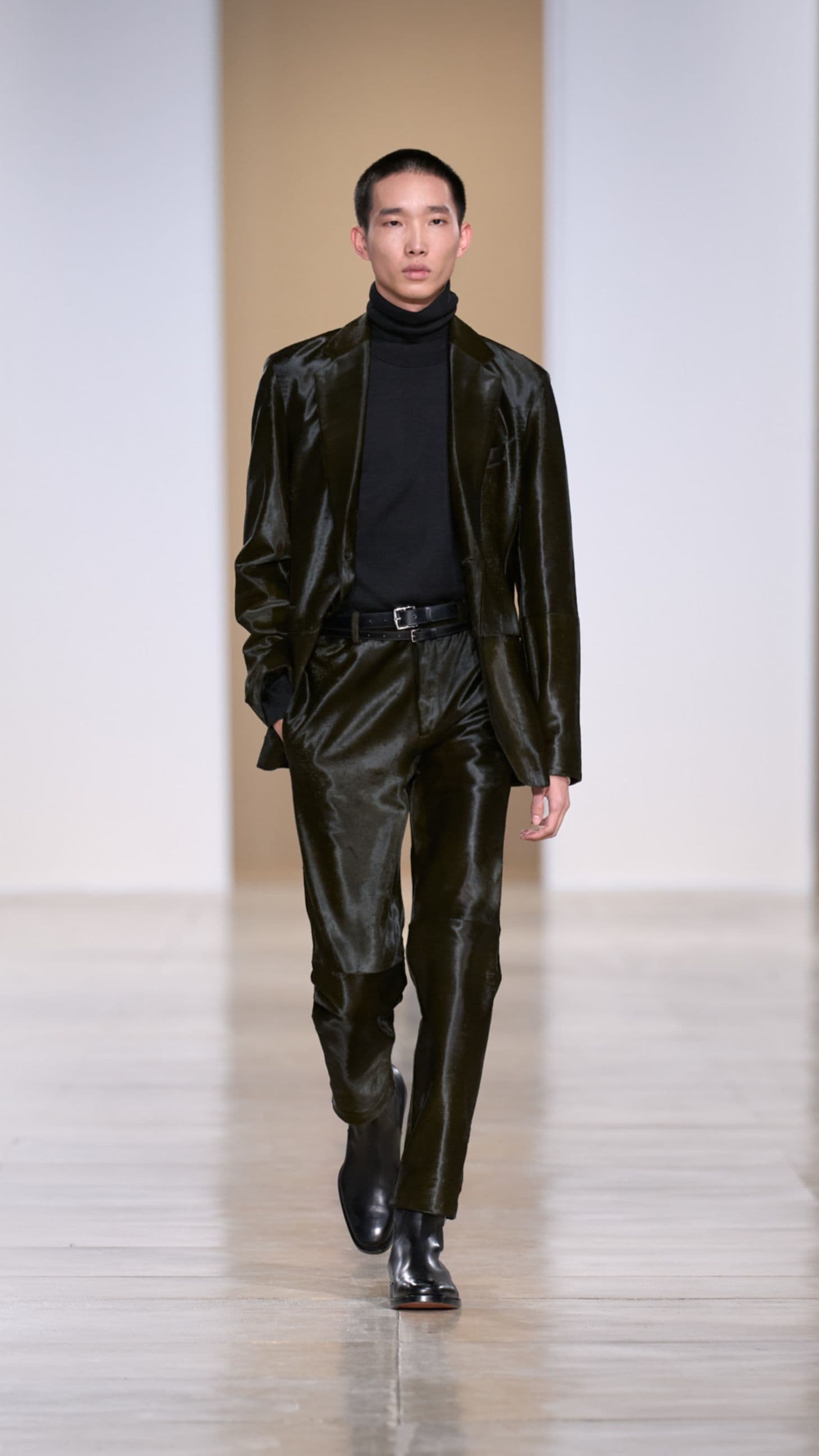



Let’s Take This Outside

The great outdoors has always been a reliable, if not, atypical source of inspiration for menswear, but with the rise of hypebeast culture performance outerwear has morphed into a dysfunctional version of itself. With down-proof jackets and hiking boots that could withstand the harshest of arctic conditions, only ever likely to meet the challenge of the urban commute. Which is why there has been a move to up the style stakes when it comes to outdoor gear.
At Rick Owens, new meaning was brought to the idea of protective outdoor gear through hyperbolic puffer coats with added neck guards and blow-up ‘balloon boots’. Bucolic pursuits to the English countryside were grasped onto at Fendi through the styling of waxed field jackets, illusion pleated ‘skirts’ and metallic lurex knits, while the addition of delicate floral embroidery refreshed fleece short sets at Todd Snyder. The labourer who spawned the concept of ‘Workwear’ in the form of sturdy denim or canvas appeared in many guises on the runways, with vintage Carhartt images sure to have been pinned to many a mood board. Pharrell Williams Louis Vuitton gave us elongated and quilted suede versions of the utility jacket and the ultimate (boot) stamp of approval with a collaboration with Timberland. Ryota Iwai’s Auralee created comforting cocooning layers in soothing pastel tones. And technical innovation was not forgotten for the sake of fashion, so it was left to Stone Islands collection of concise technical outerwear featuring aluminium-infused organza and iridescent nylons which benefitted from the light show which prevailed throughout their runway presentation.


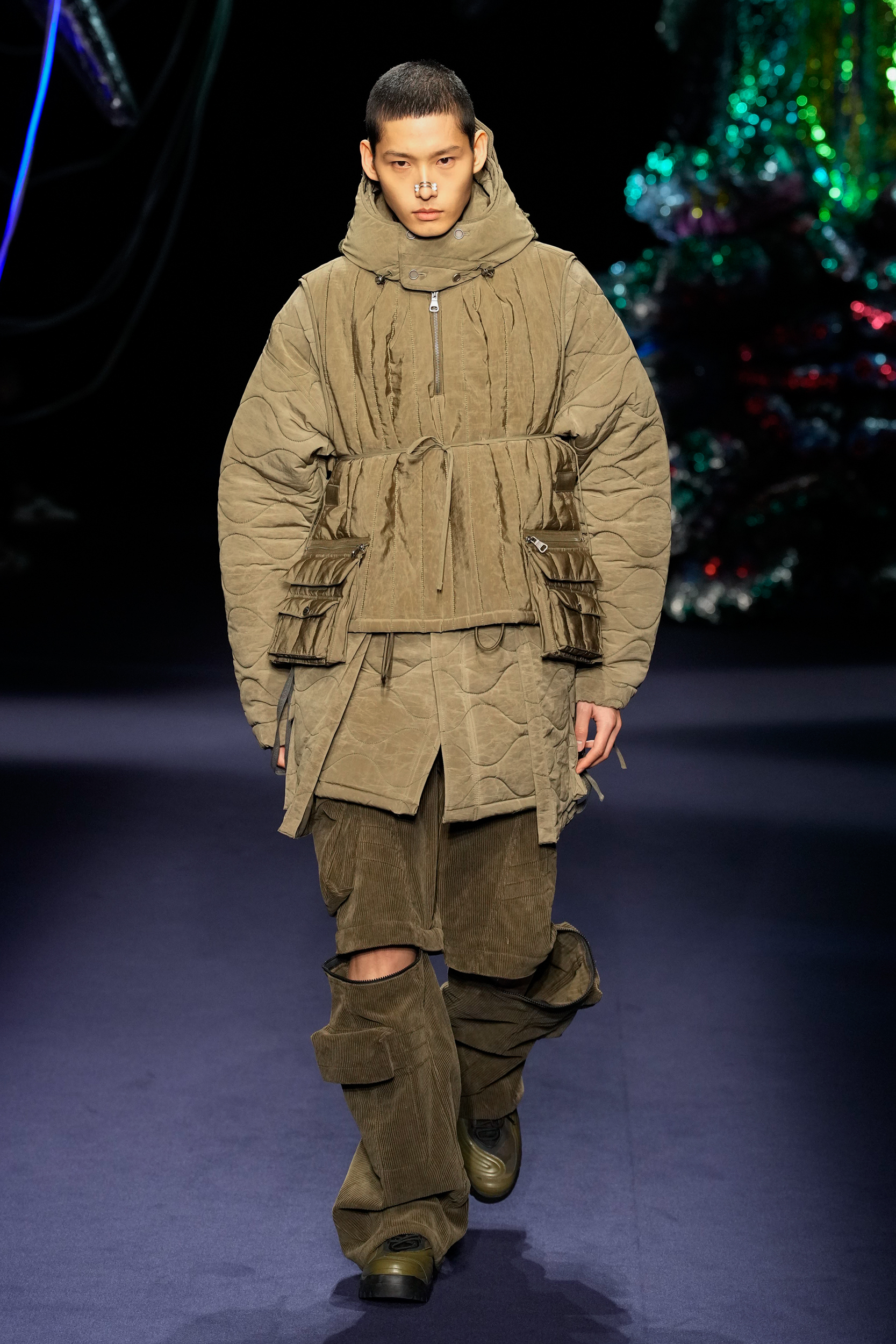



The Non-Conformists Way
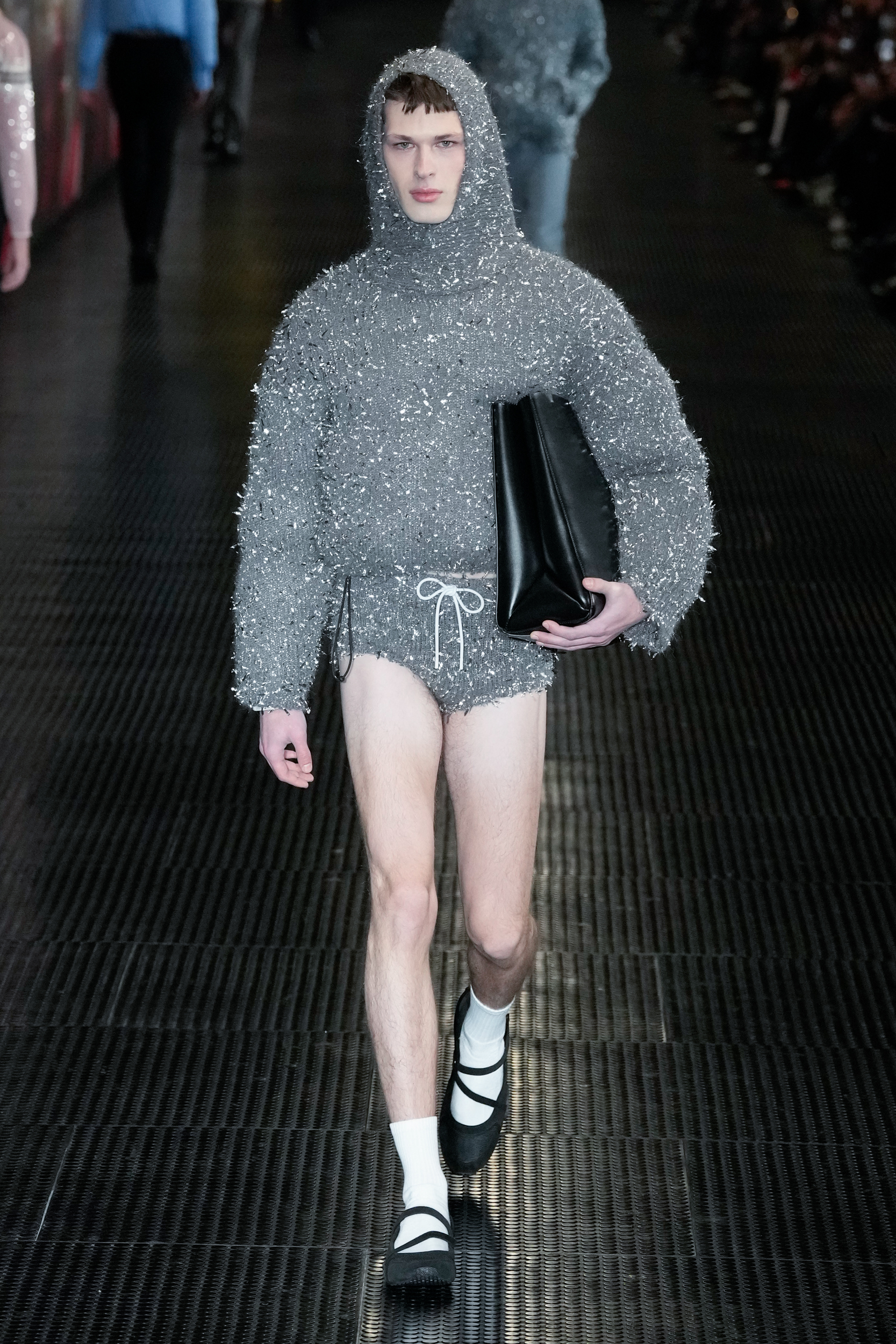
Where once the menswear category was being lauded as more exciting than women’s ready-to-wear, both established names and relative newcomers were still determined to stand out rather than conform to commercialism. The radical merged with reality as designers brought unique elements to the runway, playing with unconventional styling ideas and subverting the norm
LVMH Prize finalist Burc Akyol seamlessly blended avant-garde concepts with practical applications on the runway, showcasing his distinctive style that combines craftsmanship with a touch of kink – evident in designs like lace-trimmed sheer tapered pants and asymmetric fur-lined capes, marking a promising debut in the industry. Others chose to simply play with unconventional styling ideas, subverting the norm through cutting and pasting denim and tailoring, taking inspiration from the paper doll method of outfit building at Junya Watanabe and puffing out proportions at Sean Seun. Puffballs were used as a way to cocoon the modern man, who has taken many knocks of late, and so looks at JW Anderson, MSGM, and Walter Van Beirendonck came with built-in padding, to help their customers withstand life’s battles. For the less subversive, but still adventurous, the ‘Master of Materials’ that is Dries Van Noten said simply layer a contrast knit across the shoulders and skew your shape with the fastening of a pin or undoing of a side seam zip.

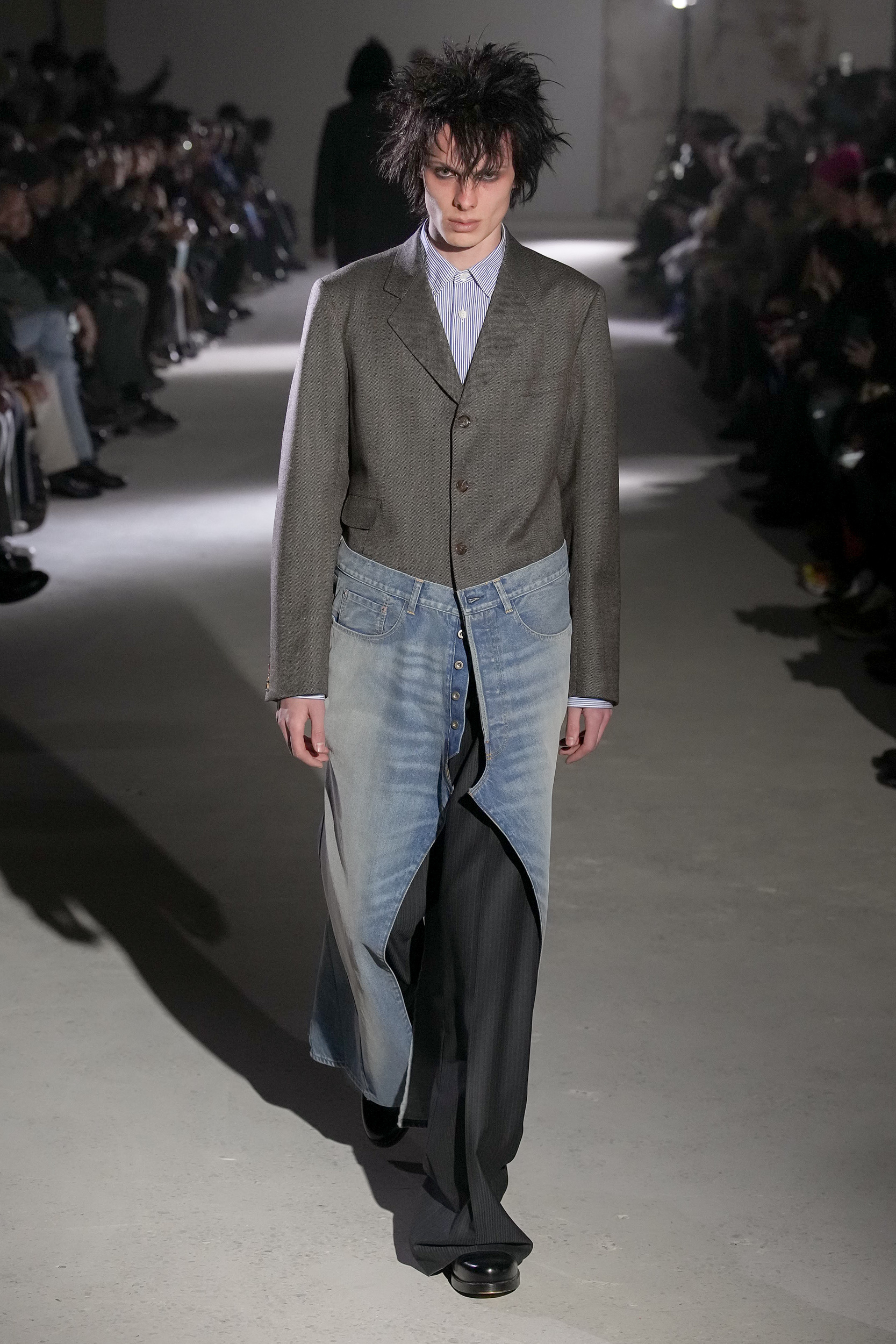

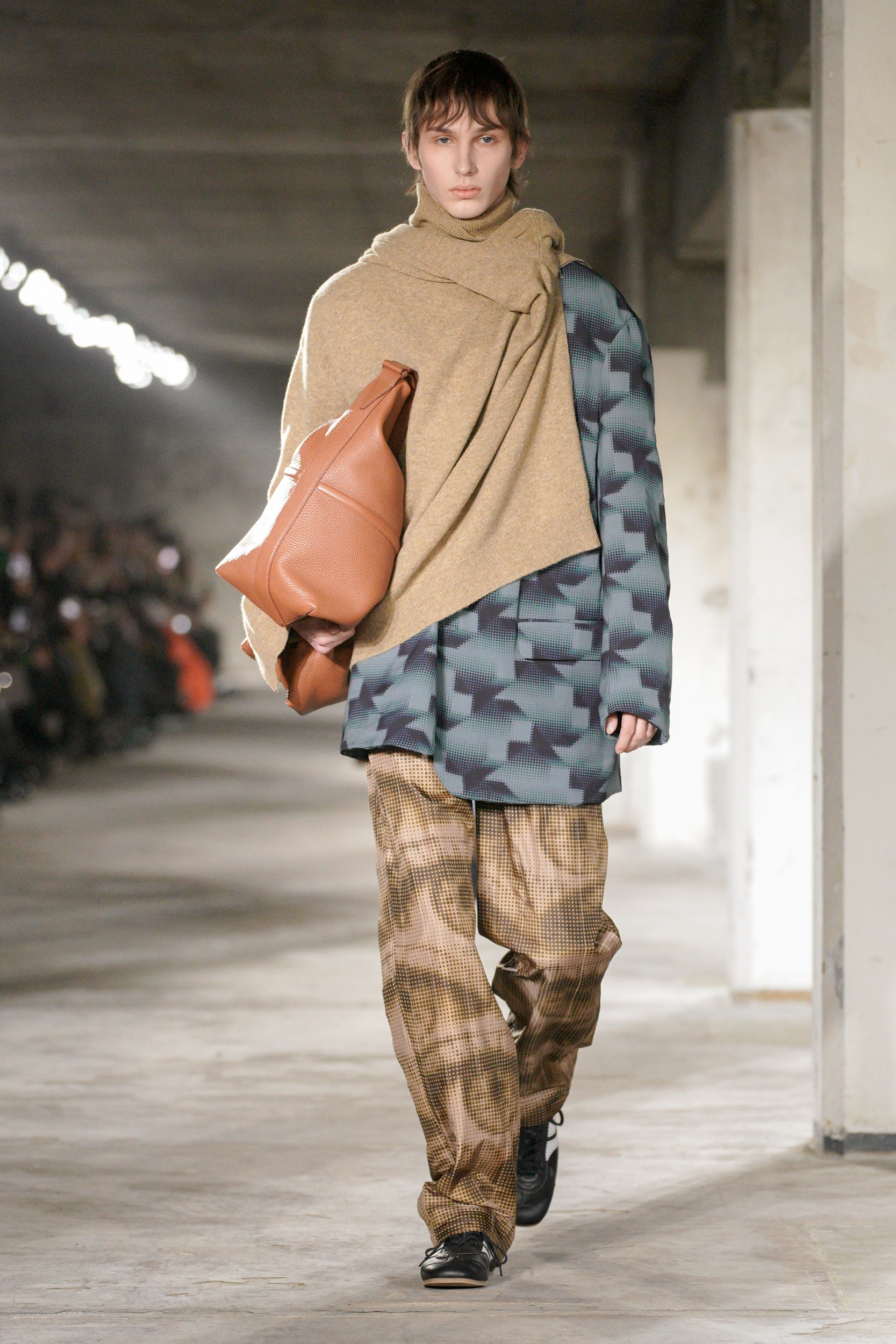
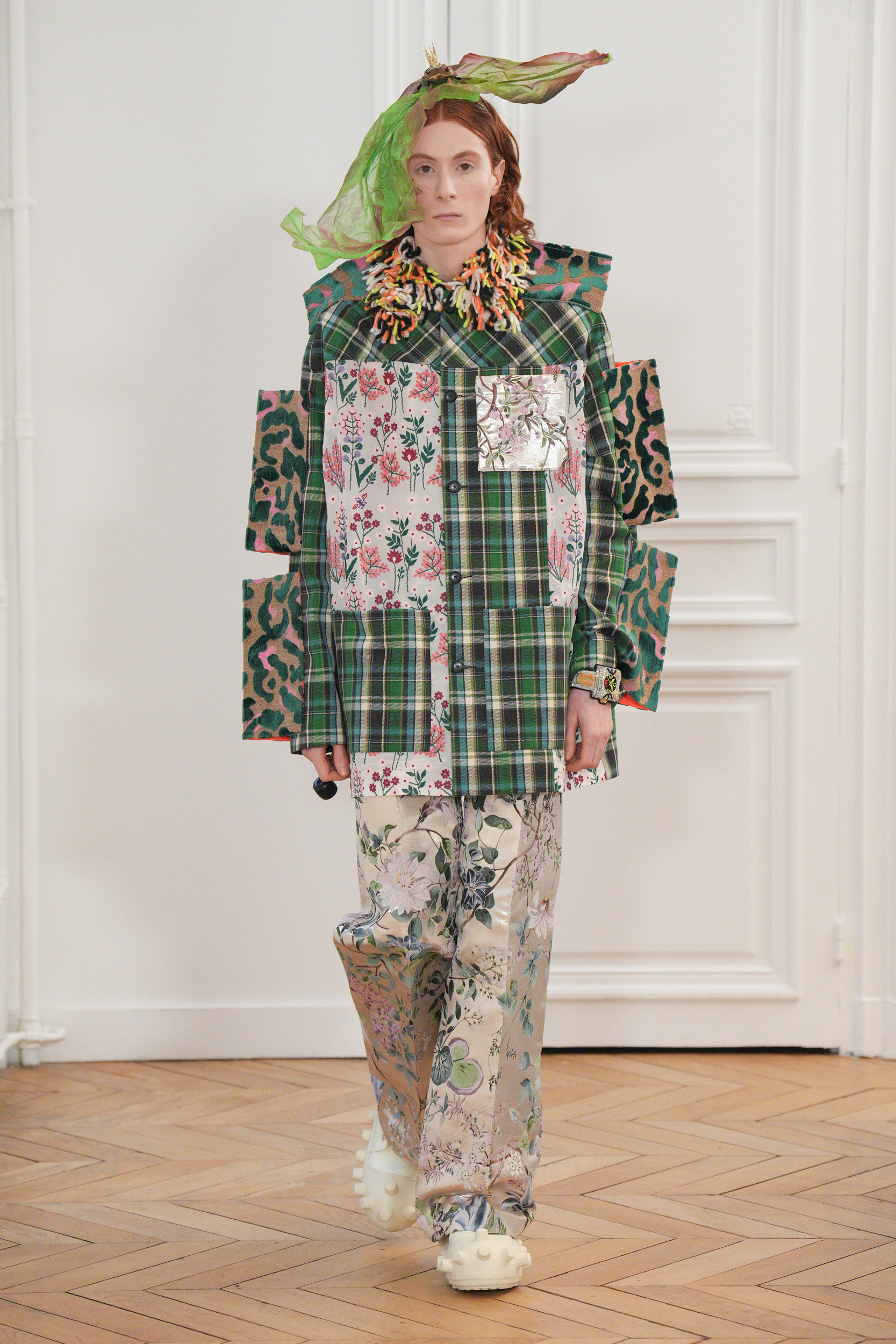
Those who kept up the momentum of boundary-pushing design were rewarded with praise for igniting conversations around the possibilities of the growth of the menswear market, and how it does not have to solely rely on what has gone before.
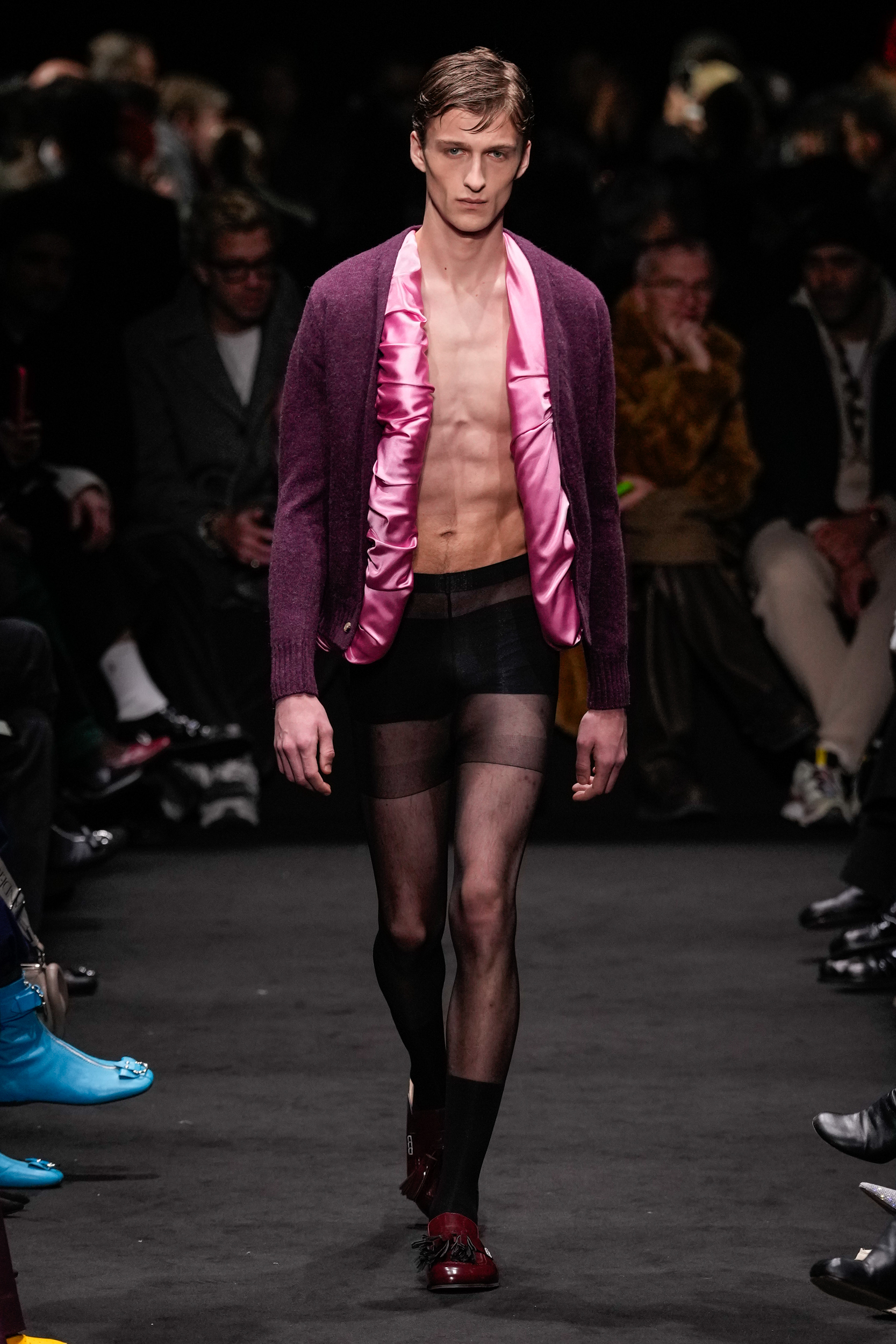
Simon Cracker’s extended co-ed show was a considered study on deconstructing do-it-yourself, taking tie-dye shirting, and splicing it with tweeds or patchworking fabric scraps with pearl trims, and encrusting embellishment onto blazers. It was also part of the designers efforts to continue being a beacon for those who want to take the low-impact path to success, and a welcome reprieve from the polish and primness which is typically representative of Italian fashion.
Finding Comfort In Cosy Grandpa Cosplay
Hard times call for cosy comfort, and so we are set to enter the era of #Grandpacore, an aesthetic already being revered on social media apps such as TikTok (the hashtag of which has already racked up over 20 million views), as the act of dressing like an Octogenarian is predicted by visual search engine Pinterest to become a major trend in 2024.

Colourful twinsets, fair-isle cardigans, sweater vests and high-waisted corduroy trousers with sturdy shoes or fisherman’s sandals will bridge the generation gap between Gen Zer’s and older Boomers. The look very much has a thrifted underpinning which aligns with the nineties grunge-era (also trending), with luxury menswear brands giving it a dose of designer dishevelment this season. Knitwear is the foundation of the look and layering it grunge-style with flannel shirts or silk scarves, meant the more holes the better to amplify pattern and texture clashing as seen at Egonlab. While Jonathan Anderson for Loewe collaborated with artist Richard Dawkins for collaged knitted looks likely to spawn a thousand copies and adding the required handknitted authenticity to the aesthetic.


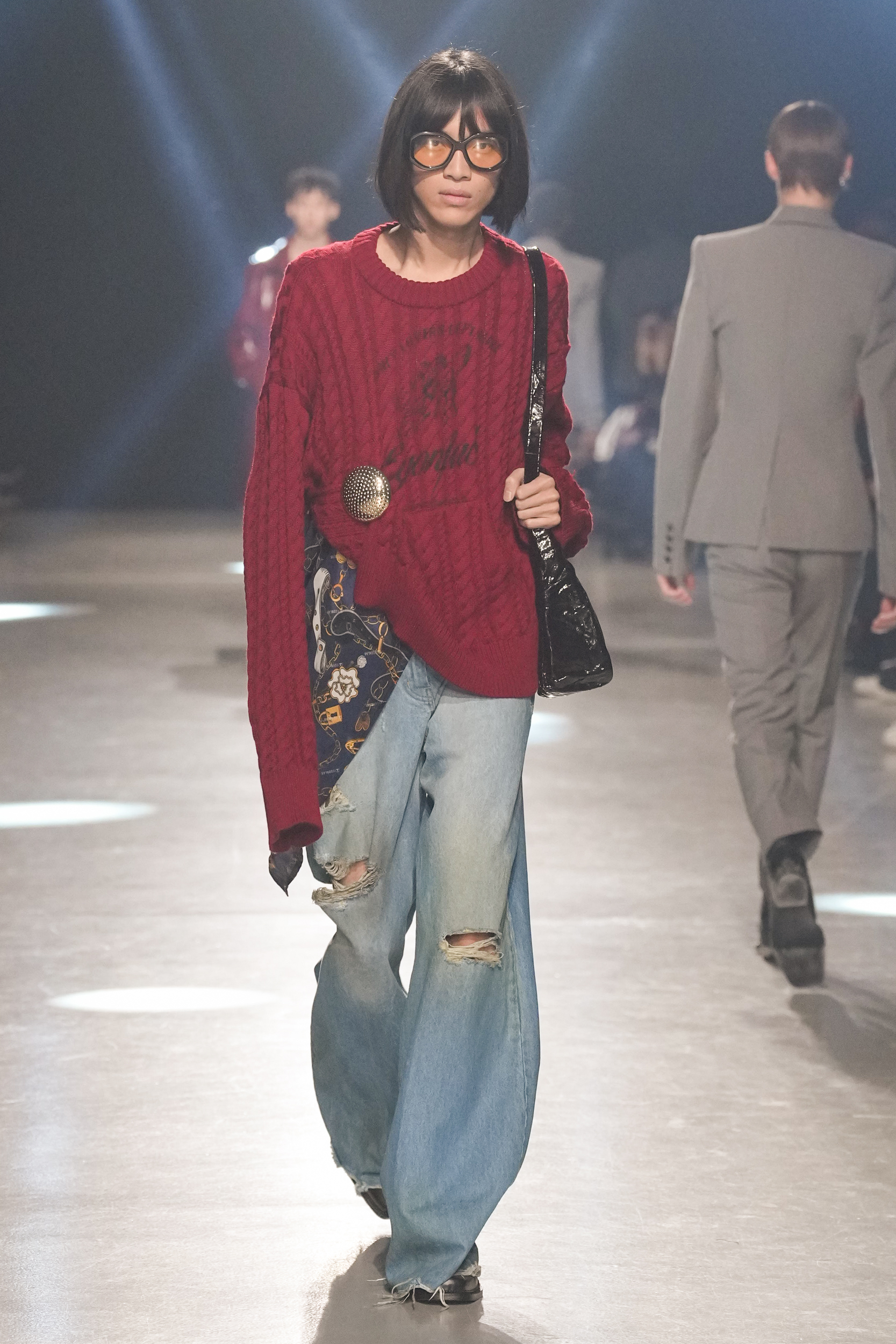
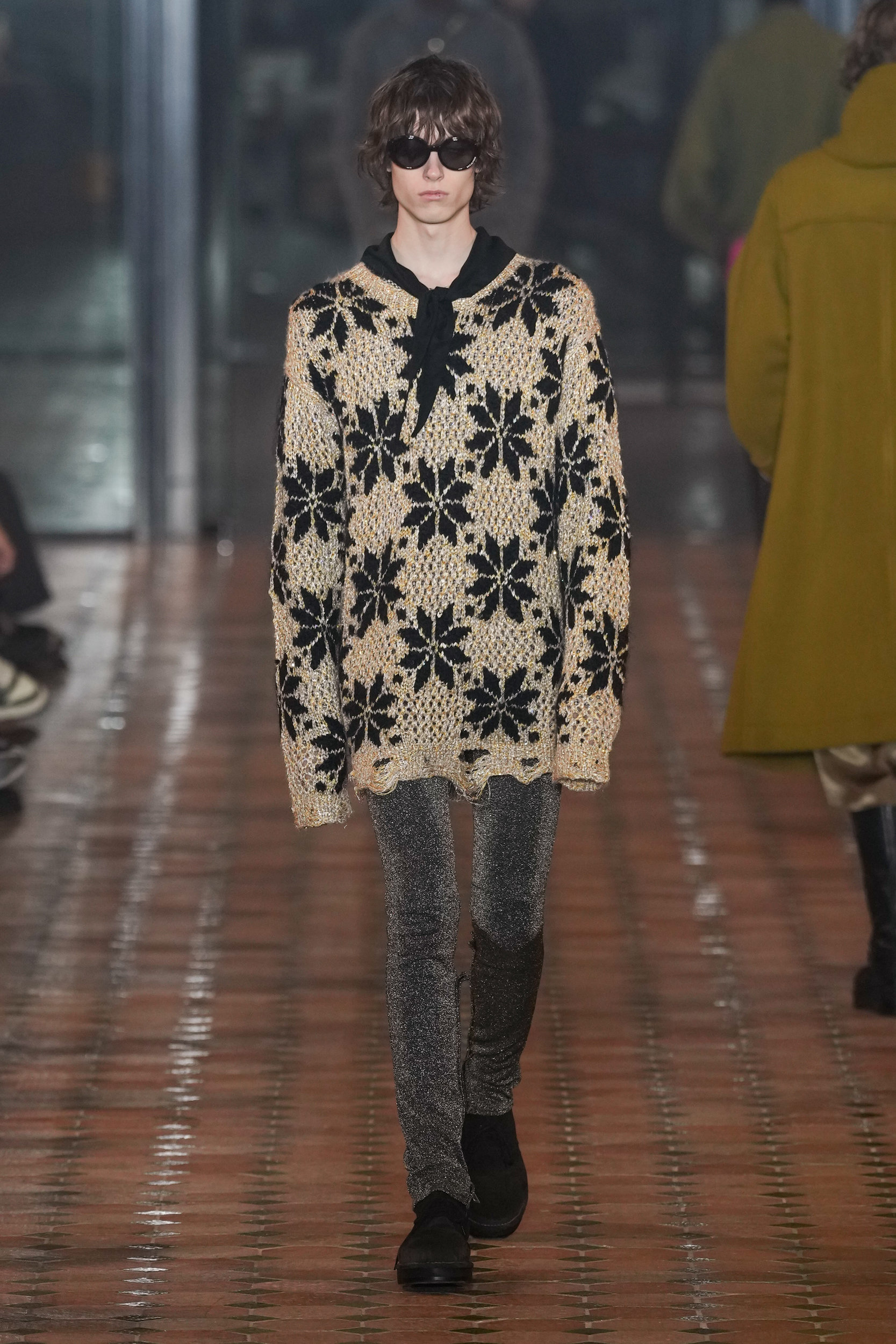


A Night At The Opera Never Looked So Good
In amongst the darkness, a little light shone through as crystal and iridescent sequin coatings were the preferred method of surface decoration.
After a summer of silver led by showgoers outdoing each other for Beyoncé’s Renaissance tour, the torch is being passed to menswear as Sabato De Sarno’s menswear debut for Gucci updated the boxy tank top with all-over shine, to be worn ostentatiously with a matching oversized Jackie bag or with a simple pair of straight-cut black trousers to let the embellished tank do the talking. While Amiri’s City of Lights inspired collection featured fluffy angora knits and resort shirts encrusted with oversized pink and crystal-clear gem stones, akin to Ddquared2’s sequin sweats.

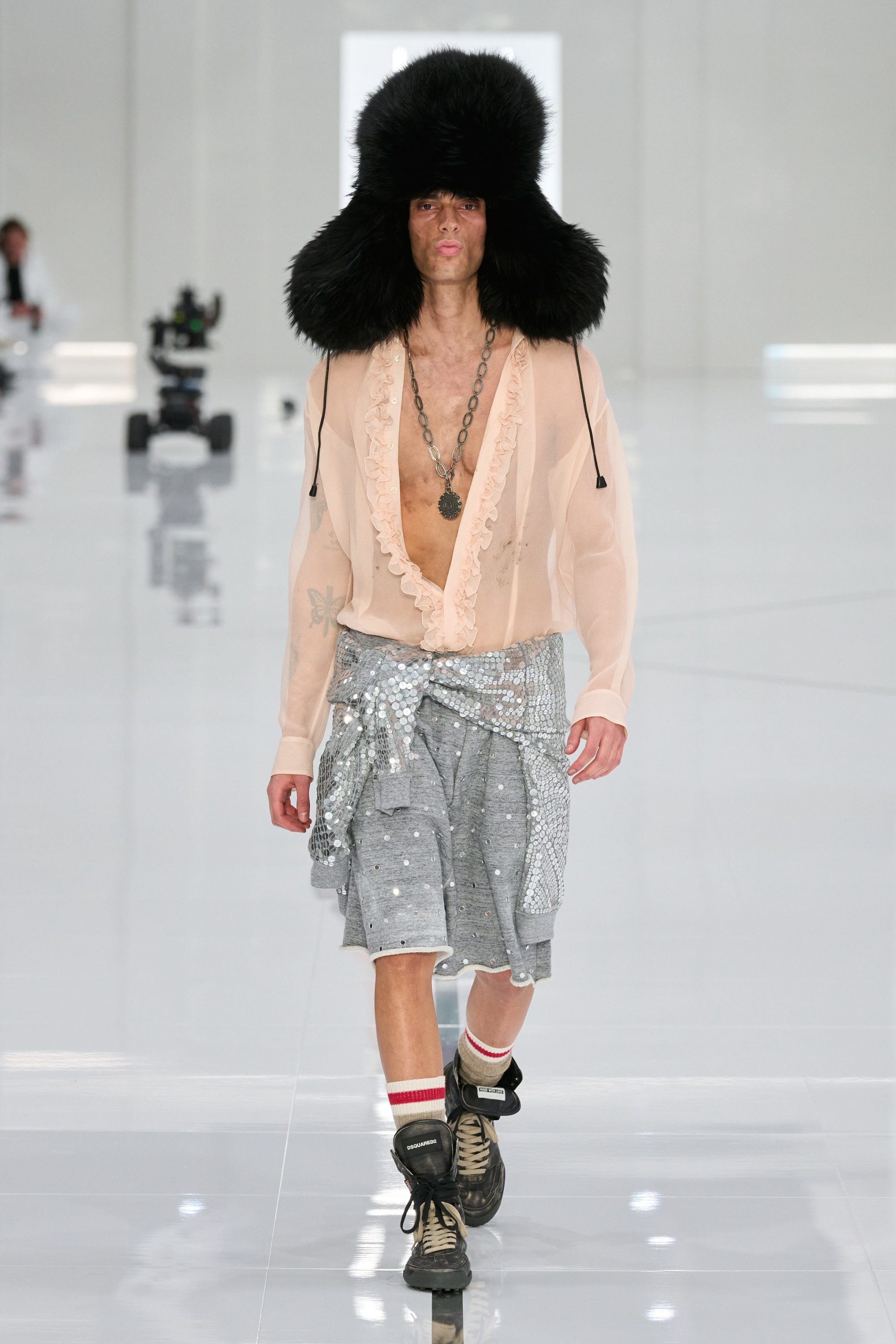

The ultra-feminine blouse – a gender unifier – offers easy entry into the world of gender fluidity and Dsquared2 demonstrated how an enlightened high-school jock would wear it (ruffled and unbuttoned to the naval). At Dolce and Gabbana, the design duo took a demure, almost modest, route with both their high-neck satin and more dramatic volume-sleeved pussy bow blouses. Both versions are sure to be coveted by the brands male and female customer. And when combined with more casual-leaning bottoms, such as denim jeans or Bermuda shorts it proves that decadence can work for the everyday occasion too.

The era of the Dandy, which often seems to be a safer space for traditional menswear brands to experiment with ideas of fluidity, is making a comeback.
Right down to more ladylike iterations of slip-on footwear silhouettes making appearances on the red carpet – Donald Glover recently wore a pair of heeled opera pumps from Bode to the 2024 Emmy’s. Kim Jones’ Dior Men’s footwear of choice was the ballet flat, which appeared alongside his heavily embellished debut couture collection, while satin Mary-janes were offered up as ready-to-wear alternatives. An encouraging sign that these more directional shoe styles may be picked up by early-adopters is the fact that male celebrities have already taken to the ballerina, from Marc Jacobs to Harry Styles.





